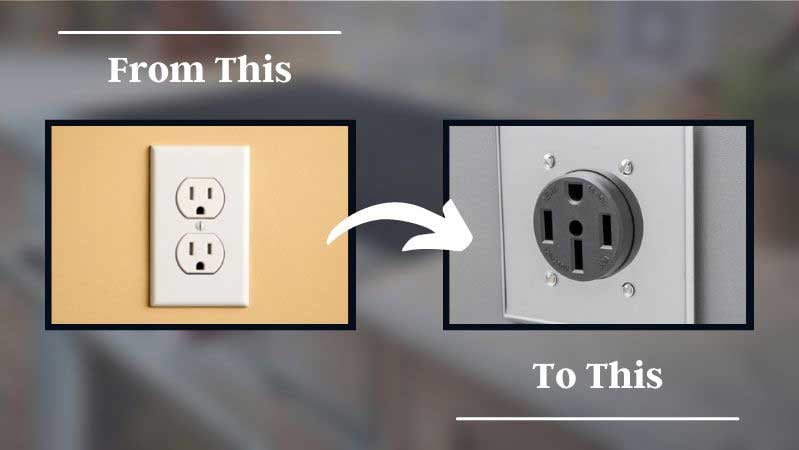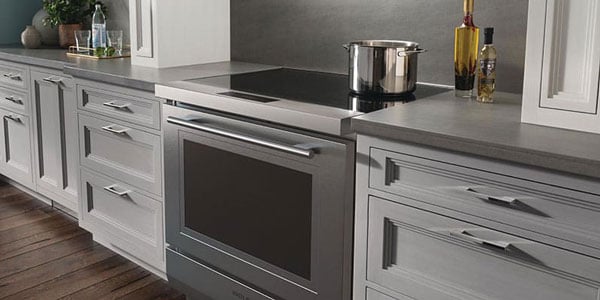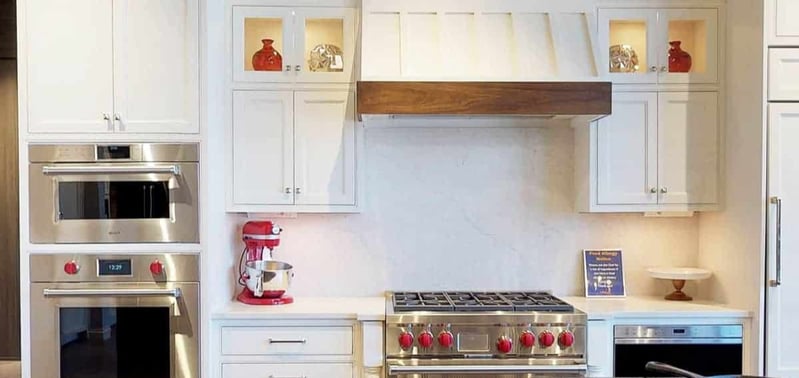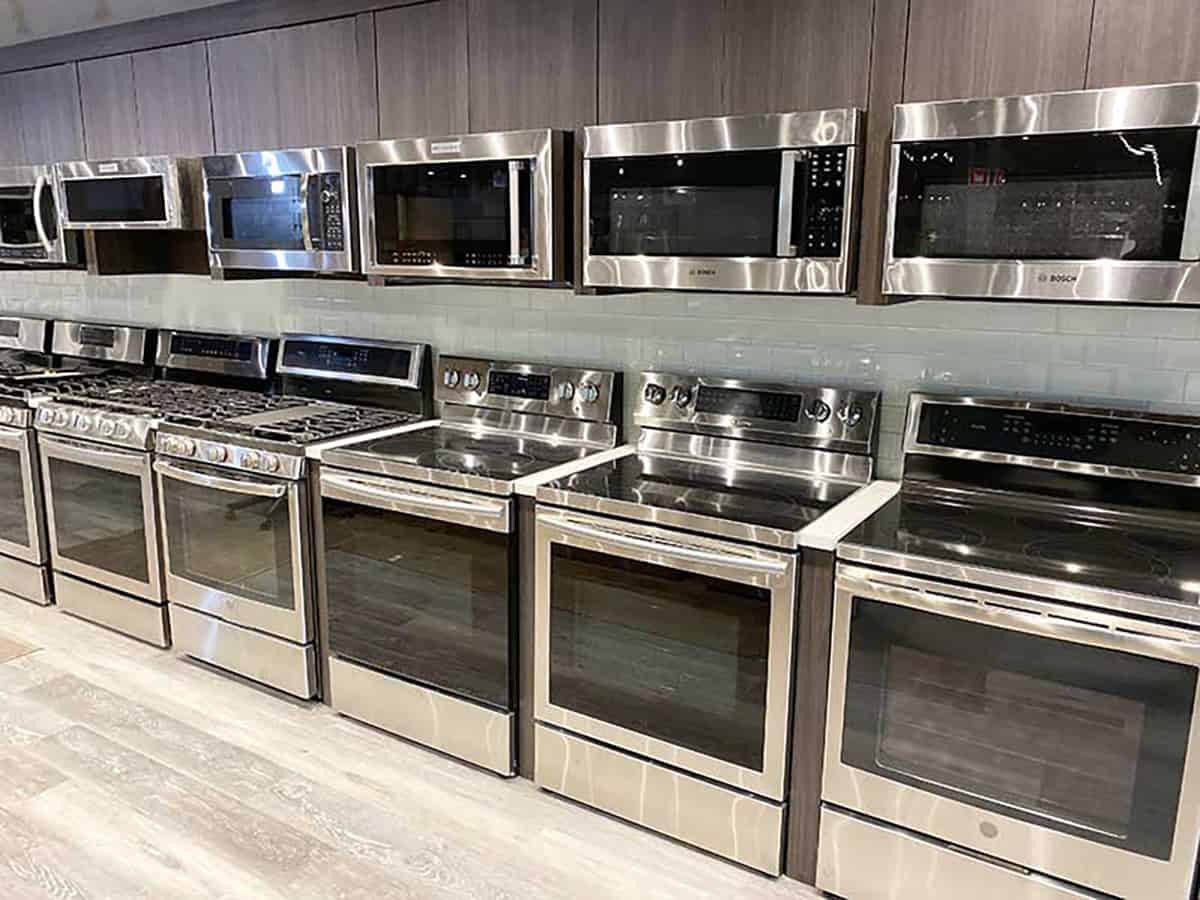Key Takeaway: Converting from gas to induction is better for many reasons, but is not easy to do. It requires planning and the right people.
In this article, you'll learn how to convert from a gas range or induction to induction.
You can have significant benefits, including faster cooking times with better simmer control, less venting, easier clean up, and better air quality in your home with fewer gas emissions.
However, you can't just unplug a gas range and plug in an induction.
Below are six steps and plenty of problems I want you to know about upfront.
Ultimately, I will show you a much less expensive way to remove those harmful emissions from your home.
Before you get started:
Do you have an appetite for this? It's a big project involving rewiring your kitchen. Depending on your state, you must hire an electrician, a plumber, and a good cabinet cutter. The estimated average cost is $3,000-$3,500.
OK, let's start the process.
Looking for answers about Induction Cooking?
Short on time? Download our free Induction Cooking Buying Guide.
6 Steps to Convert Your Gas Range to Induction
Step 1 - Research
Step one is to pick your induction cooktop or range. This may sound obvious but always measure. Most ranges are 30 inches but vary between slide-in, front control, and freestanding types.
Cooktops are generally 30 and 36, whether gas or induction. However, dimensions can vary, and you will need someone to cut your countertop.
Pro Tip: Look at the cooktop cutout or the hole in your counter, which differs from the size of the cooktop by a few inches in width and height
If it's granite or marble, they will need a special stone saw and some general expertise, adding a bit of complexity.
Step 2- Check Your Electrical Box
You will need a 50-amp breaker. A 50-amp breaker will protect the circuit of the induction range. A gas range only operates on a 12-amp 120-volt circuit.
Induction requires much more. If you don't have enough power, you must call an electrician. Upgrading the power will require a permit from your town or city.
Step 3: Installing the Electrical System
Your electrician will install the new breaker and run the wiring to the new location.
That wiring will require a minimum of a 6-gauge copper wire. They will wire the breaker to a NEMA 14-50R which is a 4-pronged 50-amp socket.

Pro Tip: A line conditioner regulates the voltage so it does not trip the breaker. Voltage spikes are a repair problem, especially for induction ranges, because they use the whole 50-amp circuit. A line conditioner can range from $500-1000 (it's on Amazon for $580)
Step 4: Uninstalling the Gas Appliance
In states like Massachusetts, you need a plumber to uninstall a gas appliance.
In this case, you must also shut off the gas at that location. The good news is you don't have to pay the plumber to wait for a new gas range's delivery to be reinstalled.
They can uninstall the appliance, shut off the gas valve, and leave.
Step 5: Delivery of an Induction Range or Stovetop

Finally, an easier part, but it can still go wrong here.
For most ranges, you should be able to remove the gas range and plug in the induction range.
The delivery people can plug in a range.
However, it's a bit more complicated if you have a slide-in range. Slide-ins overlap the top, and the cabinets need to be modified.
You have slide-ins if you don't see a seam between the range and the countertop.
You will also need to cut an existing opening if you are buying a slide-in range.
Cooktops

For cooktops, the process is tougher. As I said in the beginning, you will need someone experienced to cut your counter to accommodate your new cooktop.
You will also need an electrician to install the cooktop because it is not plugged in like a range.
Rangetops
I want to mention pro rangetops briefly. They are installed on a cabinet with the counter completely cut out. In this case, you must cut a metal enclosure or rework the countertop to support an induction cooktop.
I wouldn't stress. It's not that common.
Step 6: New Pots and Pans

One last thing: Your glassware, Teflon, and ceramic pans will not work on induction
If you are worried about compatibility with your metal pans, see if a magnet will stick to your pots and pans.
Some great materials include stainless steel like All-Clad, carbon steel, which you'll find in most works, or induction-compatible non-stick.
We offer a high-quality yet lower-priced alternative at Yale for much less than All Clad. And yes, cast iron works great too!
Buying a Better Range Hood

If you can live with gas but are worried about more toxic fumes, replacing your hood is less expensive yet effective.
Most vents don't work properly because they lack exhaust, capture-area depth, or aren't vented properly.
A good vent will cost you $800-$1,500, far less than $2,500-$5,000 for an induction cooktop or range. You use the same power and don't need a plumber.
You may have some issues if the existing installation has issues or if you have a downdraft.
But you will spend an estimated $3,000-$5,000 less replacing the hood than an induction cooktop or stove, including installation in a simpler process.
To learn more about the vents, you should not buy, click this video, and thanks for watching:
Additional Resources
Ventilation is the key consideration when planning your kitchen. Get it right with the Yale Ventilation Buying Guide. You will learn the key elements to venting, make-up air laws, why it's important, and popular vents you shouldn't buy. Over 1.2 million people have read a Yale Guide.
Related Articles:
Why Should You Trust Us?
It seems that every appliance review has nothing but glowing comments about almost every product, yet you read customer reviews and they are almost universally bad.
We are here to fill in the disconnect. We'll give you the best features, and the drawbacks as well, including reliability based on over 37,000 calls performed by our service team just last year. Our goal is to give you ALL the information so you know what's right for you.
Please consider subscribing or adding to the conversation in the comments below. We appreciate you stopping by.







